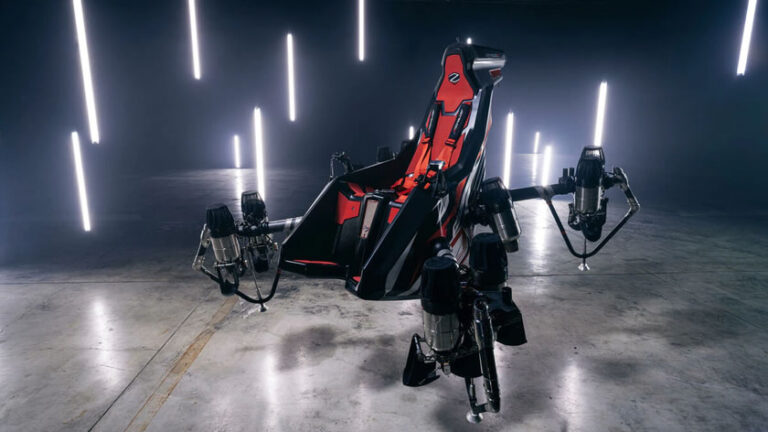In recent years, technological advancements have paved the way for a new era of personal air mobility. One of the most exciting innovations in this field is the Jet Racer by Zapata, a company known for its groundbreaking flying machines. In this article, we will delve into the technology behind the Jet Racer, its potential applications, and Zapata’s future plans.
A Glimpse into the Jet Racer
Technical Specifications
The Jet Racer is powered by ten jet engines, making it capable of incredible speeds and altitudes. Although the top speed and maximum altitude are still being determined through testing, Zapata estimates that the Jet Racer could potentially reach speeds between 125 and 155 miles per hour, and altitudes over 9,800 feet. The vehicle is designed to be highly capable, with the ability to lose two engines and still maintain flight.
Easy Flight and Built-in Flight Controller
One of the most impressive features of the Jet Racer is its ease of use. The built-in flight controller ensures the flying machine remains stable in various weather conditions, prevents crashes, and makes autonomous flight a possibility. As a pilot, you only need to input your desired direction, and the Jet Racer’s flight controller decides the best way to achieve it. This feature makes it possible for anyone to fly the Jet Racer after minimal training.
Potential Applications and Market Impact
Urban Air Mobility
As the world moves towards urban air mobility as a mass transit solution, the Jet Racer is well-positioned to make a significant impact. The autonomous flight capabilities built into the vehicle make it a viable option for those without pilot training. Furthermore, the compact size and relatively short flight time make it ideal for recreational, military, and offshore operations, such as delivering personnel and goods to locations with limited space for landing.
Future Plans and Flagship Product
Zapata has ambitious plans for the Jet Racer and its future flying machines. The company aims to establish permanent flight centers where customers can rent their flying machines, similar to jet skis or ATVs. Additionally, Zapata is working on launching another flying machine, the “sbooter,” featuring a hybrid electric and combustion engine and longer flight times.
Jet Racer Specifications and Features
Here is a detailed list of the Jet Racer’s features and specifications:
- Altitude: Up to 3,000 meters (approximately 9,800 feet)*
- Speed: Up to 250 km/h (approximately 155 mph)*
- Maximum number of turbines: 10
- Maximum carrying capacity: 200 kg (approximately 441 lbs)
- *Performances envisaged
The Jet Racer has a variety of potential applications across both civilian and military sectors:
Civilian Sector:
- Aerial demonstrations
- Leisure activities
Military or Civil Security Sector:
- Rapid mobility in special operations
- Reconnaissance and surveillance flights
- Quick access to boats
Key Strengths
The Jet Racer boasts numerous key strengths that set it apart from other personal air mobility devices:
- Access to steep terrain
- Capable of flights in strong and turbulent winds
- Autonomous flights possible
- Transport of specific materials
- No visible propellers
Safety Features
The Jet Racer is designed with multiple safety features to ensure a secure and reliable flying experience:
- Multi-level redundancy
- Propulsion: 10 isolated turbines, allowing for the loss of 2 engines without consequences to the flight
- Control system redundancy
- Redundant fuel system and power supply
- Redundant electrical control for each motor
- Steering assistance
In conclusion, the Jet Racer by Zapata has the potential to revolutionize personal air mobility with its innovative technology and ease of use. As the company continues to develop its flying machines and expand its offerings, it will undoubtedly become a significant player in the urban air mobility market.






